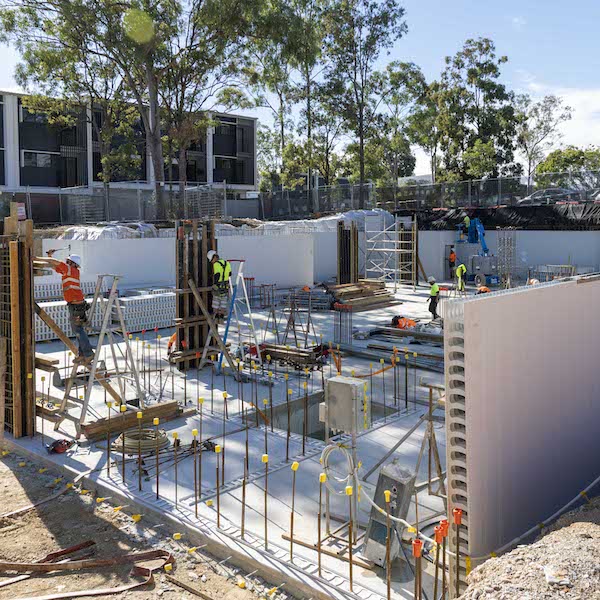Construction is an important industry in Australia, generating over $360 billion in revenue and accounting for 9% of Australia’s total GDP. A strong commercial construction industry often serves as an indicator of a strong domestic economy. The construction sector not only creates jobs and essential infrastructure, but it also injects local communities with cash flow.
However, like many sectors of the Australian economy, the commercial construction industry has been heavily impacted by the ongoing COVID-19 crisis. The flow-on effects from the pandemic have drastically changed the construction landscape by forcing contractors to adapt to smaller work crews, new health and safety concerns, decreased resource availability and an increased cost of operations.
The circumstances of the pandemic, as well as broader technological advancements, are set to change the way construction companies operate in 2021 and beyond. Here, we discuss three commercial construction industry trends likely to gather momentum.
The Impact of Digital Technology
The commercial construction industry has continued to adopt new digital technologies to navigate the limitations brought about by COVID-19.
This includes drone technology, which allows site managers to inspect hard-to-reach or dangerous locations without the need to physically get a worker up there. Drones can easily access difficult areas and provide high-definition video and photos of the points of interest from a variety of angles. They also allow builders to map, model and monitor their jobsite from an aerial perspective, helping identify potential site complications which may have gone unnoticed from ground level.
‘Smart buildings’ which integrate IoT technology (sensors, software, automation and data) to help monitor and regulate the building’s environment and operations, are also becoming more common, due to their ability to create pleasant working environments as well as ensure that a facility is correctly optimised. The systems in these buildings are interconnected, relaying information between each other in order to keep operations within the building running smoothly. For example, smart building technology can be used to monitor energy consumption patterns and analyse the data to produce actionable recommendations to improve energy efficiency.
A Focus on Mental Health
Every year, 190 Australian construction workers take their life, which is a loss of one construction worker from suicide every two days. Construction workers are six times more likely to die from suicide than workplace accidents, and young construction workers are over two times more likely to take their own life than other young Australian men.
These sobering statistics speak to a problem which has clearly been prevalent in the commercial construction industry, but is beginning to receive the attention it deserves.
Moving into 2021, mental health concerns are becoming an increasing focus of construction companies as well as organisations like MATES in Construction and TradeMutt, who are dedicated to starting conversations about mental health on the work site and fostering an environment within the construction industry where workers are not afraid to speak up about mental health issues and receive any support they need.
A Renewed Environmental Focus
While construction companies scrambled throughout 2020 to implement COVID-safe practices, Australia’s effective handling of the pandemic will mean that the commercial construction industry has the opportunity to shift focus away from strictly preventative health measures and focus on implementing innovative and sustainable new technologies and processes.
Sustainable construction is becoming an expected standard in the eyes of many Australians, and the desire for greenscaping as well as low carbon emissions and resource consumption in buildings has become commonplace.
One groundbreaking sustainability trend to watch out for in 2021 is the development of living materials: biological materials which are self-sustaining, self-repairing and self-replicating. These materials are usually made up of bacteria or fungi that can be grown on the job site and are capable of repairing themselves when broken. An example of this is a self-healing concrete which uses fungus to repair small cracks that appear in concrete due to tensions.
Seeking Commercial Construction Builders?
At Solutions Built, our expert builders pride themselves on staying up-to-date with the latest industry trends in order to deliver value to our clients. If you would like to know how we can assist with your commercial construction project or have questions concerning the commercial construction industry, please get in touch today.
